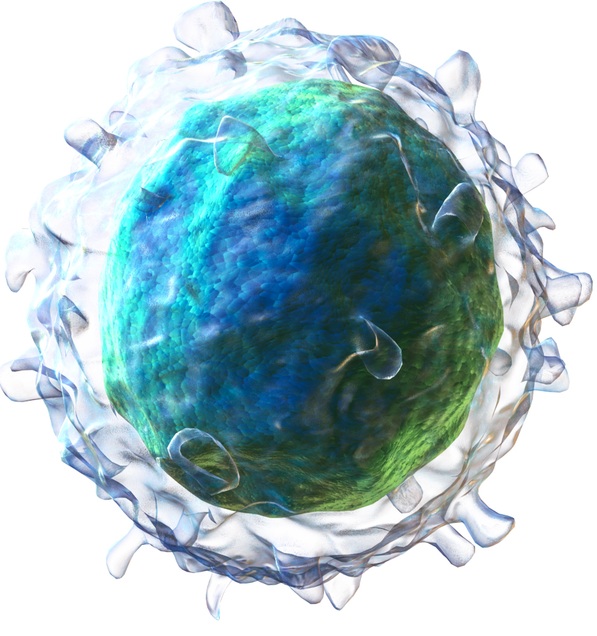The key difference between B cells and plasma cells is that the B cells are a type of white blood cells that work in adaptive immunity while the plasma cells are a type of activated B cells.
Our immune system detects a wide range of infectious pathogens and protects us against various disease conditions. The immune system has two major parts as the innate immune system (first line of defense) and the adaptive immune system (secondary accurate defense with memory). B cells and plasma cells are two categories of white blood cells in the adaptive immune system. B cells produce antibodies which serve as antigen presenting cells and secrete antibodies. On the other hand, plasma cells are activated B cells that produce a large number of antibodies.
CONTENTS
1. Overview and Key Difference
2. What are B Cells
3. What are Plasma Cells
4. Similarities Between B Cells and Plasma Cells
5. Side by Side Comparison – B Cells vs Plasma Cells in Tabular Form
6. Summary
What are B Cells?
B cells are a type of white blood cells that synthesizes different antibodies against different pathogens. Thus, B cells are a major component of adaptive immunity. Structurally, B cells are of different types such as naive B cells, plasma blast B cells, plasma cells, and memory B cell. Hence, their functions vary accordingly.

Figure 01: B Cell
Naive B cells are the primary type of B cells which are not exposed to an antigen. Once they encounter an antigen, they can further differentiate into other types of B cells. Plasma blast cells are early stage antigen exposed B cells. Hence, they produce a smaller quantity of antibodies. Plasma cells, on the other hand, are the final stage of B cell proliferation. Thus, these cells produce the highest quantity of antibodies. A memory B cell is the dormant stage of B cell proliferation. Therefore, these cells have the longest lifespan out of all B cells. Memory B cells circulate throughout the body. Hence, they generate a secondary antibody response – a much stronger response of immunity.
What are Plasma Cells?
Plasma cells are completely proliferated (activated) B cells. These cells produce larger quantities of antibodies against specific pathogens. B cells differentiate into plasma cells as a result of B cell activation upon exposure to particular antigens. This process of plasma cell production is the final stage of B cell proliferation.

Figure 02: Plasma Cells
Plasma cells are able to produce higher quantities of antibodies and release into blood and lymph when there is an infection. Then the produced antibodies bind with the target antigens. Once bound, these antibodies initiate the neutralization or destruction of foreign pathogenic antigens. The production of antibodies by plasma cells takes place until the antigen is completely destroyed and removed from our system.
What are the Similarities Between B cells and Plasma Cells?
- B cells and plasma cells are two types of white blood cells.
- They are lymphocytes with no granules in the cytoplasm.
- They perform a crucial role in adaptive immunity; in the production of antibodies.
- Both types of cells contain a large round shaped nucleus.
What is the Difference Between Difference Between B cells and Plasma Cells?
B cells are a type of white blood cells. When they are exposed to antigens, they become activated and convert into few other cell types. Plasma cell is one such activated type of B cells. Thus, this is the key difference between B cells and plasma cells.
Moreover, both types of cells are capable of producing antibodies. However, plasma cells are the cell type that produces the highest amount of antibodies in our body. Therefore, this is also a difference between B cells and plasma cells. Furthermore, another difference between B cells and plasma cells is their differentiation. B cells can differentiate into other cell types while plasma cells cannot.
The below infographic presents more information on the difference between B cells and plasma cells.

Summary – B Cells vs Plasma Cells
Both B cell and plasma cells are lymphocytes and play a crucial role in adaptive immunity. They are able to produce antibodies. The key difference between B cells and plasma cells is that B cells are a type of white blood cells which produce antibodies against different pathogens in adaptive immunity while plasma cells are a type of activated B cells. Naïve B cells are the primary type of B cells that are not exposed to antigens. Once these cells exposed to antigens, they activate and convert into plasma cells and memory B cells. Memory B cells circulate throughout the body and generate secondary antibody responses. Plasma cells are the cells that produce the highest quantity of antibodies out of all B cell types. Thus, this summarizes the difference between B cells and plasma cells.
Reference:
1. “B Cells.” British Society for Immunology, Available here.
2. “Plasma Cell.” Encyclopædia Britannica, Encyclopædia Britannica, Inc., 20 Apr. 2016, Available here.
Image Courtesy:
1. “Blausen 0624 Lymphocyte B cell (crop)” By Blausen.com staff (2014). “Medical gallery of Blausen Medical 2014”. WikiJournal of Medicine 1 (2). DOI:10.15347/wjm/2014.010. ISSN 2002-4436 (CC BY-SA 4.0) via Commons Wikimedia
2. “Plasmacytoma ultramini1” By Nephron – Own work (CC BY-SA 3.0) via Commons Wikimedia
ncG1vNJzZmivp6x7pbXFn5yrnZ6YsqOx07CcnqZemLyue8OinZ%2Bdopq7pLGMm5ytr5Wau26ujJycpaSjYq6vsIypo5qrnZZ6pLHLpapo